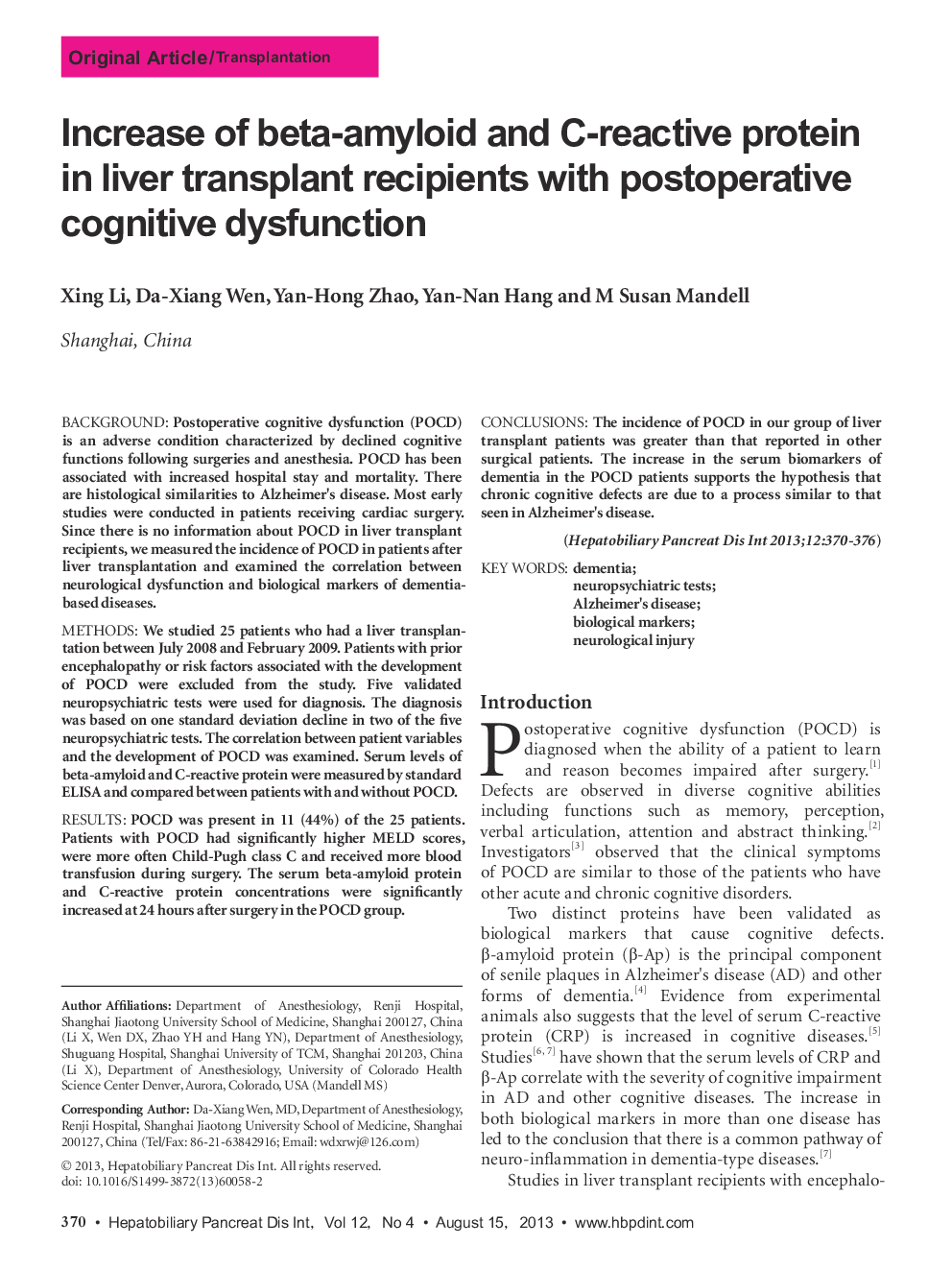| کد مقاله | کد نشریه | سال انتشار | مقاله انگلیسی | نسخه تمام متن |
|---|---|---|---|---|
| 3337191 | 1213788 | 2013 | 7 صفحه PDF | دانلود رایگان |

BackgroundPostoperative cognitive dysfunction (POCD) is an adverse condition characterized by declined cognitive functions following surgeries and anesthesia. POCD has been associated with increased hospital stay and mortality. There are histological similarities to Alzheimer's disease. Most early studies were conducted in patients receiving cardiac surgery. Since there is no information about POCD in liver transplant recipients, we measured the incidence of POCD in patients after liver transplantation and examined the correlation between neurological dysfunction and biological markers of dementia-based diseases.MethodsWe studied 25 patients who had a liver transplantation between July 2008 and February 2009. Patients with prior encephalopathy or risk factors associated with the development of POCD were excluded from the study. Five validated neuropsychiatric tests were used for diagnosis. The diagnosis was based on one standard deviation decline in two of the five neuropsychiatric tests. The correlation between patient variables and the development of POCD was examined. Serum levels of beta-amyloid and C-reactive protein were measured by standard ELISA and compared between patients with and without POCD.ResultsPOCD was present in 11 (44%) of the 25 patients. Patients with POCD had significantly higher MELD scores, were more often Child-Pugh class C and received more blood transfusion during surgery. The serum beta-amyloid protein and C-reactive protein concentrations were significantly increased at 24 hours after surgery in the POCD group.ConclusionsThe incidence of POCD in our group of liver transplant patients was greater than that reported in other surgical patients. The increase in the serum biomarkers of dementia in the POCD patients supports the hypothesis that chronic cognitive defects are due to a process similar to that seen in Alzheimer's disease.
Journal: Hepatobiliary & Pancreatic Diseases International - Volume 12, Issue 4, 15 August 2013, Pages 370-376